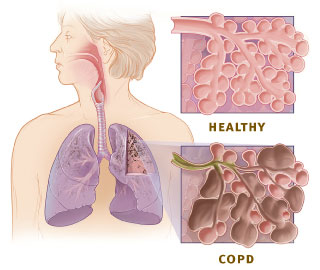Systemic lupus erythematosus (SLE) was a dreaded disease some time back. Improvements in lupus treatment have helped people live longer and healthier lives. In 1950, a person diagnosed with lupus had a 50 percent chance of surviving two years. Now-a-days, the 10-year survival rate for someone with lupus is very nearly mirrors that of general population.
In this disease the immune system of own body does not recognize own tissue and attacks certain components of body namely the collagen. Collagen forms main part of skin, joint and have its presence in all most all the organs. For this reason skin and joints symptoms invariably appear first, followed by respiratory system and kidneys etc.
The symptoms can be;
A "butterfly" rash across the nose and cheeks.
Skin rashes elsewhere.
Skin photo-sensitivity.
Joint pains and stiffness.
Muscle aches and pain.
Hair loss.
Fatigue.
Fever not linked to any other illness.
Anemia.
Difficulty concentrating or remembering.
When kidneys are affected and if, constantly deteriorate in functioning there is risk to life. The main stray of treatment at present are;
Steroids,
Immune suppressants,
Anti-malarial.
Recently, a drug called Belimumab has undergone trail; though not approved by FDA has shown promise in treatment of SLE . It blocks the communication between the immune cells namely the “T” and “B” lymphocytes and helps in preventing antibody production against one's own tissue. As it does not block this action completely, body can still fight the infectious diseases. FDA is concerned with its adverse effects like suicidal tendency and depression.
Another drug under observation is mycophenolate mofetil (MMF), which is used in renal transplant for immune suppression to prevent rejection. Science is perhaps eyeing for a complete cure of SLE in the near future.
It's important for people [with lupus] to realize that they're not alone, that the outlook is much better and there are all sorts of resources available.
In this disease the immune system of own body does not recognize own tissue and attacks certain components of body namely the collagen. Collagen forms main part of skin, joint and have its presence in all most all the organs. For this reason skin and joints symptoms invariably appear first, followed by respiratory system and kidneys etc.
The symptoms can be;
A "butterfly" rash across the nose and cheeks.
Skin rashes elsewhere.
Skin photo-sensitivity.
Joint pains and stiffness.
Muscle aches and pain.
Hair loss.
Fatigue.
Fever not linked to any other illness.
Anemia.
Difficulty concentrating or remembering.
When kidneys are affected and if, constantly deteriorate in functioning there is risk to life. The main stray of treatment at present are;
Steroids,
Immune suppressants,
Anti-malarial.
Recently, a drug called Belimumab has undergone trail; though not approved by FDA has shown promise in treatment of SLE . It blocks the communication between the immune cells namely the “T” and “B” lymphocytes and helps in preventing antibody production against one's own tissue. As it does not block this action completely, body can still fight the infectious diseases. FDA is concerned with its adverse effects like suicidal tendency and depression.
Another drug under observation is mycophenolate mofetil (MMF), which is used in renal transplant for immune suppression to prevent rejection. Science is perhaps eyeing for a complete cure of SLE in the near future.
It's important for people [with lupus] to realize that they're not alone, that the outlook is much better and there are all sorts of resources available.
...
Click here to Subscribe news feed from "Clinicianonnet; so that you do not miss out anything that can be valuable to you !!
...






